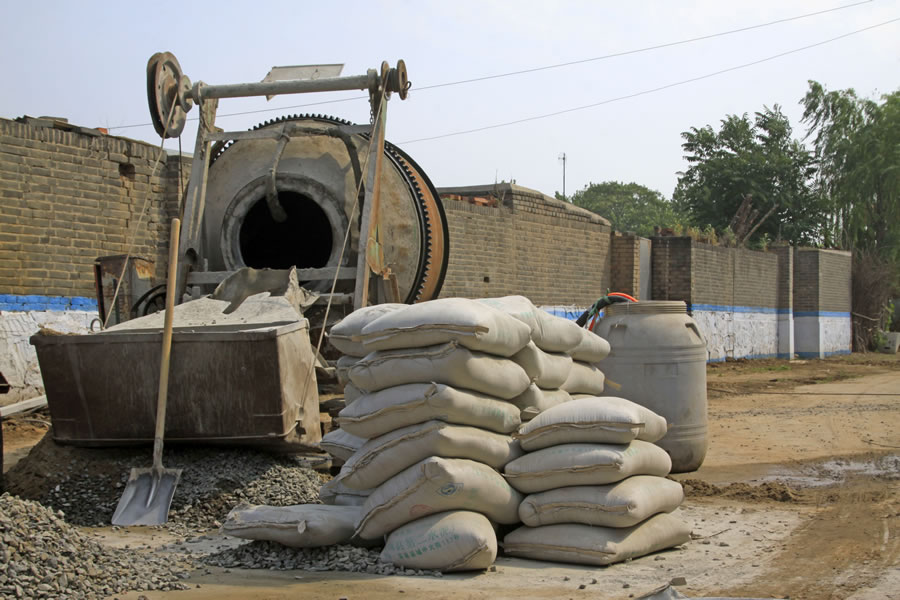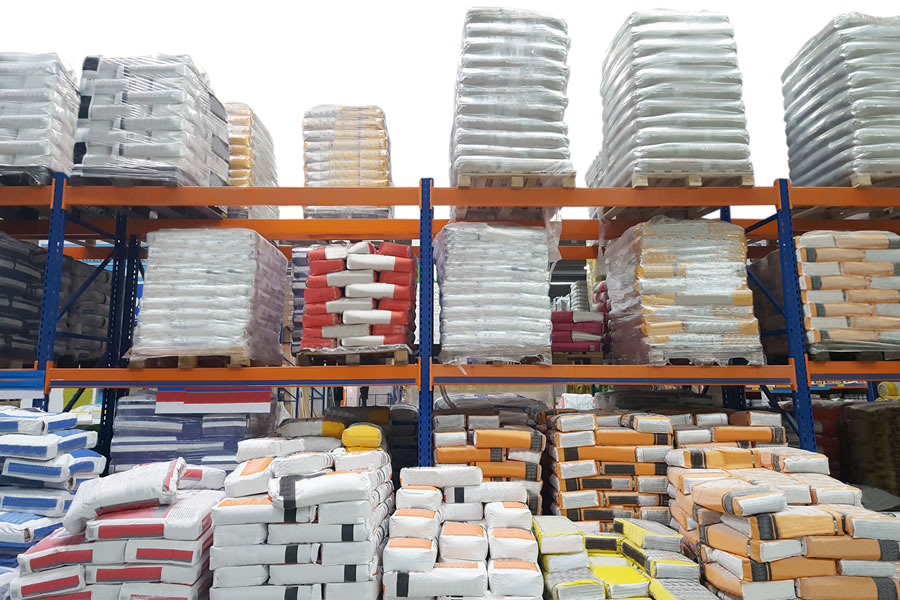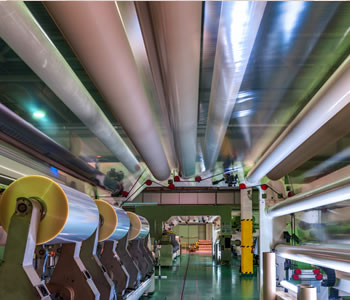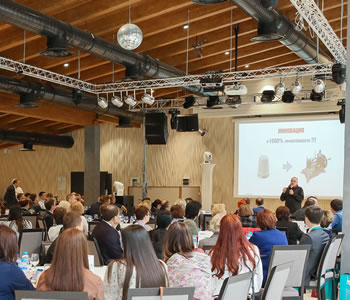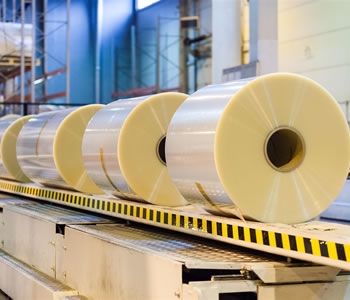In 2008, Diamur (Belgium) decided to experiment with replacing paper bags used for cement transportation with plastic ones. The new 25 kg polymer bags were warmly received by the customers, contributing to the growth of the company, which now operates in Belgium, France and Netherlands and ranks among the top 100 global suppliers of polymer bags, according to Global Cement Magazine.
Plastic bags are a good alternative to paper bags: they are less inclined to enable cement dust release.
Cement is vacuum-packed in plastic bags so that they take up less space when transported. Polymer packaging is also waterproof to prevent moisture damage to the cement. Additional protection is achieved by stretch wrapping the bags stacked in a pallet. Benedikt Van den Braembussche, Diamur’s president, told Greener Package why the company opted for plastic: “Many outlets store the product outside, exposed to the weather elements. The advantage of plastic packaging over paper bags is that the mortar keeps longer and can withstand rain. It also is easier to recycle the plastic bags because regular paper bags always contain plastic liners that can complicate straightforward recycling processes. Moreover, plastic packaging is less inclined to enable cement dust release.”
Diamur's case shows that plastic bags are a good alternative to paper bags when it comes to construction materials transportation. Some of the leading players in this market have already followed its example. In 2015, the German HeidelbergCement (one of the five major cement suppliers globally) installed a new packing line for plastic bags and included this information in its annual report. Three years ago, Anhui Conch Cement, one of the Chinese market leaders, invested in Baoji Conch Plastic Packaging and now owns 100% of this company.
Plastic packaging is less inclined to enable cement dust release.
The next leap forward came with the latest innovation in polyethylene packaging for cement from by RPC bpi indupac, a major European film manufacturer. Their vented polyethylene bags create a protective waterproof barrier while enabling cement to breathe, so that any trapped air is vented out. All this helps to extend the product's shelf life significantly.
As regards the environment, independent studies confirm that plastic packaging is more environmentally acceptable throughout its life cycle than paper packaging. Why? For starters, plastic bags are less likely to tear than paper ones. That is, the risk of product loss is minimised. No less important is the fact that the production of plastic bags requires 40% less energy. And finally, plastic can be recycled multiple times.
In September 2017, the German BEUMER Group, an integrated supplier of filling, palletising and packaging solutions, introduced yet another technology called “bag-in-bag”. This system helps pack filled paper bags using a weather-resistant plastic film in a quick and reliable manner, separately or in batches. This protects the contents from moisture, dust, insects and other environmental dangers during storage and transportation. The system is easy to integrate into existing packaging systems used bycement producers.
The impermeable film keeps cement dust from escaping the filled bags and prevents product losses. The film is just 30–100 microns thick, which means its pretty low cost. Bagging, film packaging and palletising can be seamlessly combined in a continuous production line. The bag-in-bag system is designed for packers with a capacity of up to 800 bags per hour and can be configured for three different applications: a semi-automatic insular solution, a fully automatic depalletising, packaging and palletising line, or an integrated solution in which machines can be switched on individually. Thus, the system can be adapted to specific customer requirements, according to World Cement.
The impermeable film keeps cement dust from escaping the filled bags and prevents product losses.
Drawing on feedback from the market players, they concluded that polyethylene bags offer an advantage in terms of preventing cement dust from entering the environment.
Producers of construction materials are constantly improving their packaging systems. Another solution by BEUMER, BEUMER autopac®, оis an economical and high-performance system for the simultaneous loading and palletising of bagged goods such as cement, sand, gravel, concrete, lime and other products. It is designed to withstand extreme environmental conditions, has a compact size and does not require water cooling. As the BEUMER representatives put it, “You just plug it in and the system starts working.”
In 2015, The European Paper Sack Research Group (ESG) supported by Innventia AB, a Swedish institute, studied the pros and cons of different cement packing solutions. Drawing on feedback from the market players, they concluded that polyethylene bags offer an advantage in terms of preventing cement dust from entering the environment. Paper bags, on their side, benefit from lower total cost. However, nothing is said about moisture damage during transportation and storage that may well offset this advantage.
So if the producer is wavering, plastic can be the best solution. It is strong, so the product will be delivered to the customer safe and sound. Plastic is lightweight and any of its alternatives weight about 4.5 times more (according to Custom-Pak). Hence, using polymer packaging reduces transportation costs. Plastic is all-purpose and can be shaped any way you like. On top of that, plastic can be effectively recycled. Thanks to its numerous advantages, plastic packaging is gaining increasing traction in the construction materials market.
Download PDF

